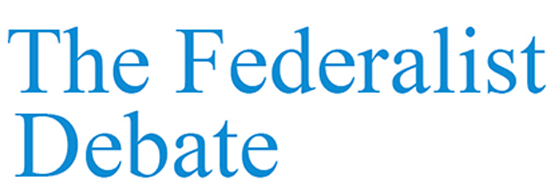Year XXXVIII, Number 2, July 2025
Economic Complexity and the North-South Dilemma
Pietro Terna
Professor Emeritus of Economics, University of Turin
Unexpectedly, in Spring 2025, we are watching the mad scramble over tariffs initiated by US President Donald Trump’s inconsistent and ill-conceived choices, whose consequences will have dangerous global effects. Let us try to analyze the situation and the related effects with the tools of economic knowledge, never forgetting the social sphere.
National economies are robust based on product value and production efficiency without neglecting social welfare. Let us look for a richer and more explanatory measure than the usual indicator of gross domestic product, GDP, which is the crude quantity of how much the product is in an area over a specific period.
Two interesting scholars, Ricardo Hausmann and César A. Hidalgo, presented in 2009 and then gradually developed the Economic Complexity Index: a ranking of countries based on the diversity and complexity of their export basket. We can find the formulas used for the calculations at https://atlas.cid.harvard.edu/glossary. High- complexity countries have sophisticated and specialized capabilities and can produce a highly diversified set of products that incorporate great value. Two websites describe the World’s economy in that way, with data, graphs, and maps: the Atlas of Economic Complexity, https://atlas.cid. harvard.edu , and the Observatory of Economic Complexity, https://oec.world. The second is aimed primarily at commercial applications. We will use the former, inviting everyone to explore it: it is entirely free.
All the maps we refer to are at https://app.simplenote.com/publish/vFJ97k.
Map 1, Country Complexity Rankings Map 1995, shows us the situation in 1995. The blue areas are those whose products show the most significant complexity and so rich labor contributions with the highest worker benefits; intermediate situations use intermediate colors; the gradually more negative ones are those with increasing intensity red: their products show the lowest complexity and therefore poor labor contributions with the poorest worker benefits. We easily detect the great weight of the United States and Europe. Russia and China are less relevant, with Africa in serious trouble.
Map 2, Country Complexity Rankings Map 2005, referring to 2005, shows very clearly the continued relevance of the United States and Europe, now accompanied by a tentative world balance by Russia and, even more, by China. The situation in Africa was always negative: Chinese, American, and Russian incursions were improving there. The Western South American area fails any improvements.
With the third map, Country Complexity Rankings Map 2021, we approach current events with the situation existing before the war brought by Russia to Ukraine. The position of the United States is still the same: stable that of Europe, with significant progress in China, slight improvement in India, serious regression in Russia, and severe deterioration in Latin America and Australia. Finally, the situation in Africa is burdensome. In short, it is a world in which the polarization of differences, as measured by the value content of products, increases and becomes extreme.
The fourth map, Country Complexity Rankings Map 2023, is close to the present, with the Russia vs. Ukraine war underway for one year. For the Russian economy, the disaster is evident, while Ukraine, which was closely linked to Russian performance, paradoxically, in 2023, has a slightly better situation. Look at the Global South: Africa, now described with more national data, is in a terrible situation, including South Africa. The problem is awful also in Latin America and Australia. China’s situation is highly favorable, and India’s is resilient in its slow positivity.
Why is all this so negative? Producing goods and services that are not very complex, in other words, poor, dooms the continuation of poverty in a world of inequality. The North-South divide is even more dramatic when considering import and export flows. The following maps are produced by the writer with a simulation model of the global economy, designed in collaboration with Prof. Mario Deaglio. The basis of the data is that of the Harvard Atlas cited above but reworked into flows that we can see in the maps.
The fifth map, Export Connections above 100 billion, shows the flow of exports greater than 100 billion per year, with the colors having the same previous meaning. Blue is for goods and services of complex content and rich labor, while red is for simple goods based on poorly paid labor. The map shows that the flows above 100 billion are practically all blue, except for the one concerning Australian exports. The South is left alone.
The sixth map, Export Connections above 10 billion, instead shows a larger volume of trade, with all flows greater than 10 billion, and here is the Global South appearing, sending its poor goods to the world’s rich and buying technology goods from them at their prices. The reasoning that many make by saying that low wages correspond to a lower cost of living is fallacious because it condemns people to poverty. If poorly paid Indian programmers, even if working for the rich North, need to buy a computer, they pay the same price, which is enormous for them, paid by a European and US colleague.
What is the World’s possible response to this situation? First, there is a no to Trump’s choices on customs barriers, and one can hope that his actions will soon be put under control by American conservatives themselves, following the terrible economic results he is causing. But much more is needed. Recall the goal of the World Trade Organization. According to their website, «the World Trade Organization (WTO) is the only global international organization dealing with the rules of trade between nations. At its heart are the WTO agreements, negotiated and signed by the bulk of the World’s trading nations and ratified in their parliaments. The goal is to ensure that trade flows as smoothly, predictably and freely as possible».
So: (i) no conflicts among people with low incomes in the trade of poor goods and (ii) no colonialist settlements of big business in poor areas of the world, where they bring the least skilled activities. WTO must transform tariffs barrier into agreements and concessions for high- complexity products to be produced in the South. Do the coalitions of the North positively react to the so-called BRICS countries? It would be helpful, but insufficient. We can hope for new horizons to overcome the Trump storm and Putin’s tyrannical action.
The first step could be that of an enlarged Europe, including Russia. This is political reasoning! The big mistake after the fall of the Berlin Wall in 1989 was not to do everything to forge strong political ties with Russia. Let us not forget that in the early 1990s, there was an intense rapprochement between Russia and NATO, and the road was open. A road to go for peace and to overcome the immense inequalities in the World. The second and most crucial step is continuing, or returning, to look at to a united World as a unique, effective reply.

